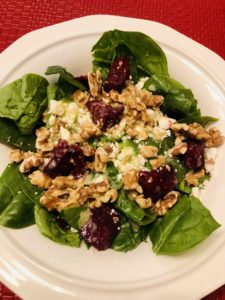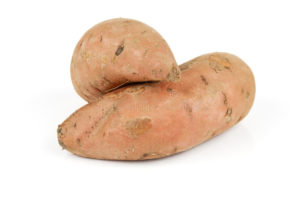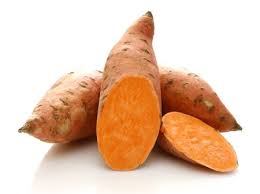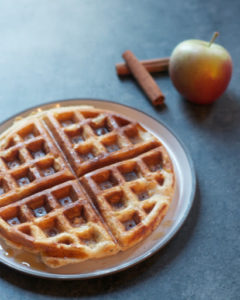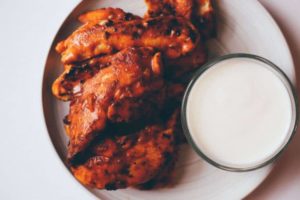How to Stop Sugar Cravings
By Dr. Alyssa Musgrove
In the 1700s, the average adult consumed about four pounds of sugar a year. Today, the United States Department of Agriculture estimates the average adult eats between 150 and 170 pounds of sugar a year. According to the American Heart Association, that works out to 22 teaspoons of added sugars a day in the form of foods, drinks and sweets — good deal over the recommended 9 teaspoons a day for men and 6 teaspoons a day for women.
Excess sugar consumption and a high-sugar diet have been associated with a host of chronic health conditions, from diabetes, to heart disease and even cancer. In fact, researchers from Harvard Medical School have reported that up to 80 percent of all human cancers are driven by the effects of glucose and insulin, which stimulate the proliferation, migration and invasiveness of all types of cancer.
The problem is, sugar can be hard to quit. Part of the reason is physiological – when you eat sugar, the brain releases dopamine, a neurotransmitter that activates the brain’s pleasure center. The brain likes this feeling and begins to crave more. That means the more sugar and excess carbohydrates you eat, the more your cravings will persist.
But it is possible to break the cycle. The tips below provide some guidance for kicking the habit once and for all:
Plan ahead
As the saying goes, if you’re failing to plan, you’re planning to fail — and this is definitely the case with sugar cravings. Don’t want to wait until you’re starving to make decisions about what you will eat. Plan your meals and snacks in advance – ensuring that each is a mix of protein, healthy fats and phytonutrients from vegetables or fruit.
Eat regularly
When you go too long between meals, blood sugar tends to drop. This makes you feel hungry and more likely to crave sweet, sugary snacks for a temporary energy boost. Aim to eat at regular intervals — every three to four hours — which usually equates to three meals and two snacks a day.
Ditch the sugary beverages
Sodas and other sweetened beverages provide about half of all the added sugar in the typical American diet. If you find it hard to pass up carbonated drinks, try switching to sparkling water or seltzer water, which provide the “fizz” without the sweetness. Add lemon, lime or orange slices for natural flavor.
Reach for fruit
If you’re craving something sweet, reach for fruit first. Fruit contains fructose, which is metabolized differently, and also contains vitamins, minerals, and fiber – all things a handful of gummy bears can’t offer. But limit fruit to 2-3 servings a day – one serving of fruit is about the size of a tennis ball and equivalent to a ½ cup. Be sure to stick to lower glycemic options like berries and green apples rather than pineapple and watermelon. Frozen grapes make a great substitute for ice cream.
Incorporate some protein into each meal
Protein helps balance blood sugar levels, which limits cravings. Healthy sources of protein include: grass-fed beef, whey protein, wild fish like salmon, mackerel or tuna, organic chicken, kefir, plain yogurt and free-range eggs.
Add in healthy fats
Healthy fats also protect against cravings. Fat is digested slowly, so you feel fuller for longer. But quality matters. Get your fat from healthy sources like avocados, nuts, seeds and coconut oil.
Beef up your breakfast
The standard American breakfast is typically a mix of carbs and sugary or starchy foods, which sets the stage for more cravings throughout the day. A “healthy” breakfast of low-fat yogurt and granola can serve up over 55 grams of added sugar. Revamp your breakfast plate by shooting for a serving of protein, some healthy fats and a dose of phytonutrients. An example would be: two eggs scrambled in grass-fed butter with a side of sautéed spinach.
Limit pre-packaged food
While it’s difficult to omit packaged foods entirely, consider making your own condiments, desserts and soups so you can control the amount of sugar that goes into them. If you do use packaged foods, read labels carefully and calculate the sugar content per serving. Four grams of sugar is equal to one teaspoon.
Nix the artificial sweeteners
While it might seem logical to substitute artificial sweeteners for the real thing, these alternatives often make cravings worse. Researchers have found artificial sweeteners can change the palate, causing you to desire more in order to feel satisfied. For a natural sugar boost, reach for green leaf stevia. (Try to avoid stevia extracts and altered stevia products like Truvia, which are processed and can contain other ingredients.)
Out of sight, out of mouth
You can’t snack on something that isn’t there. If you’re serious about kicking the habit, limit the amount of sugary snacks you bring into your house.
Consider supplements
Finally, certain herbal supplements can help with cravings and provide support while making the changes mentioned above. Patients in my office have had great success with Gymnema, used in Ayurvedic medicine for centuries to support healthy blood sugar levels.
Pathways to Healing specializes in holistic chiropractic care. Dr. Alyssa Musgrove draws on a variety of techniques, including chiropractic, kinesiology, nutrition, food allergy testing and lifestyle counseling to assist clients in achieving optimal health and wellness in one setting. Pathways to Healing is located at 1022 Founders Row, Lake Oconee Village, Greensboro. The office can be reached at 706-454-2040.
